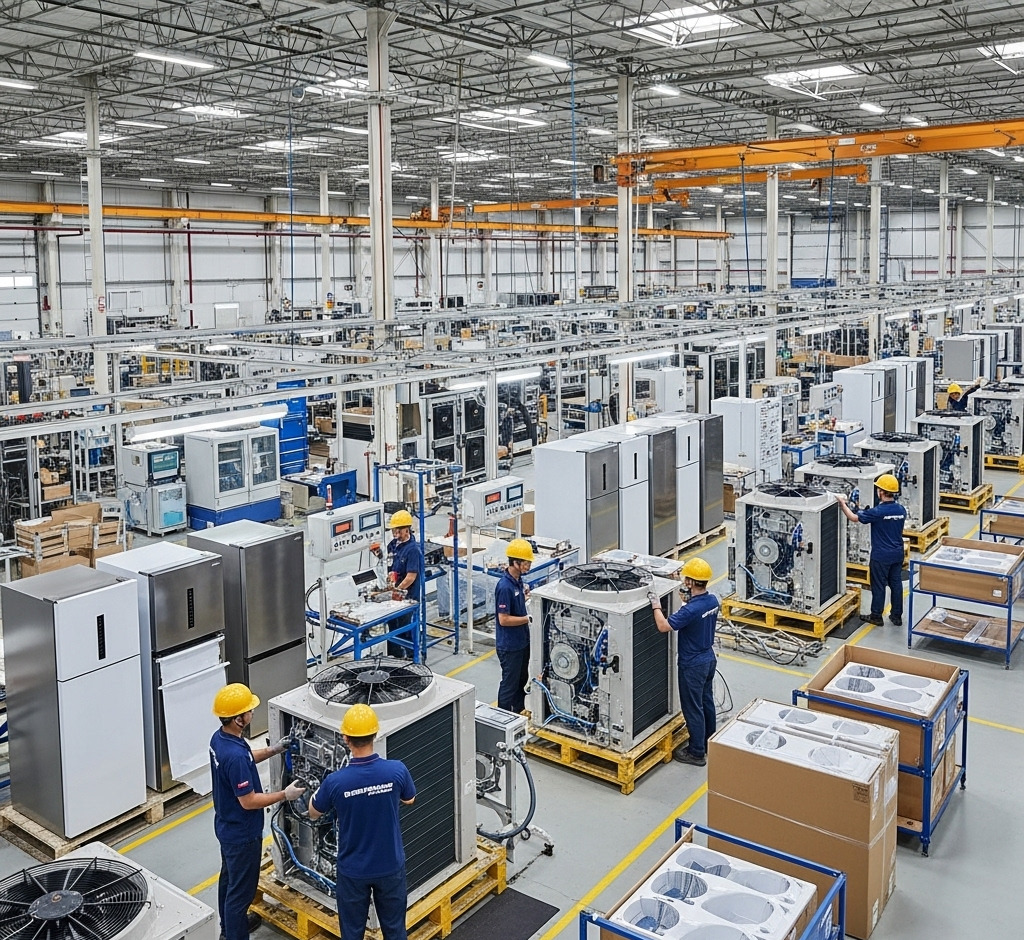
In the competitive world of HVAC-R (Heating, Ventilation, Air Conditioning, and Refrigeration) manufacturing, optimizing profit margins is critical to staying ahead. Procurement analytics offers a powerful way to achieve this by providing data-driven insights into purchasing processes, supplier performance, and cost management. By leveraging these insights, manufacturers can reduce costs, improve efficiency, and boost profitability. Here’s a guide on how to use procurement analytics to improve margins in HVAC-R manufacturing.
Procurement analytics involves collecting, analyzing, and interpreting data related to purchasing activities to make informed decisions. In HVAC-R manufacturing, this includes data on raw materials (like copper, steel, or refrigerants), supplier contracts, inventory levels, and logistics costs. By turning raw data into actionable insights, companies can identify inefficiencies, negotiate better terms, and streamline operations.
Cost Reduction: Analytics helps identify cost-saving opportunities by highlighting overpriced materials, underperforming suppliers, or inefficient purchasing patterns.
Supplier Optimization: Evaluate supplier performance to ensure quality, reliability, and cost-effectiveness, which directly impacts production costs.
Inventory Efficiency: Avoid overstocking or stockouts by forecasting demand accurately, reducing carrying costs and production delays.
Risk Mitigation: Monitor supply chain risks, such as price volatility for raw materials like copper or refrigerants, to make proactive decisions.
Improved Margins: By optimizing procurement processes, manufacturers can lower costs and improve profit margins without compromising quality.
Start by gathering data from all procurement-related activities, including purchase orders, supplier contracts, pricing history, and inventory records. Use an Enterprise Resource Planning (ERP) system or procurement software to centralize this data. For HVAC-R manufacturers, key data points include:
Cost of raw materials (e.g., aluminum, steel, refrigerants).
Supplier lead times and delivery reliability.
Inventory turnover rates for components like compressors or coils.
Freight and logistics costs.
Ensure data accuracy by integrating systems across departments, such as procurement, production, and finance.
Invest in analytics platforms like SAP Ariba, Coupa, or Power BI to process and visualize data. These tools can:
Identify spending patterns across suppliers and materials.
Highlight cost outliers, such as components purchased at above-market rates.
Provide predictive analytics to forecast price trends for volatile materials like copper or refrigerants.
For smaller manufacturers, even Excel with advanced formulas or open-source tools like Python can offer basic analytics capabilities.
Evaluate suppliers based on metrics like cost, quality, delivery time, and compliance with environmental regulations (e.g., refrigerant standards). Use scorecards to rank suppliers and identify those offering the best value. For example:
Are certain suppliers consistently delayed, causing production bottlenecks?
Can you consolidate purchases with fewer suppliers to negotiate bulk discounts?
Are there opportunities to source eco-friendly materials at competitive prices to meet regulatory demands?
Excess inventory ties up capital, while stockouts halt production. Use procurement analytics to:
Forecast demand for HVAC-R components based on historical sales and market trends.
Implement just-in-time (JIT) inventory practices to reduce carrying costs.
Monitor slow-moving inventory (e.g., outdated refrigerants) to avoid obsolescence.
For instance, analytics can help predict seasonal demand spikes for air conditioning units, ensuring you stock up on compressors or refrigerants without overbuying.
Armed with data on supplier performance and market prices, negotiate better terms. For example:
Use historical pricing data to challenge supplier quotes for copper tubing or electronic controls.
Secure volume discounts by consolidating purchases with top-performing suppliers.
Include clauses for price adjustments if raw material costs fluctuate significantly.
The HVAC-R industry faces unique supply chain risks, such as refrigerant regulation changes or metal price volatility. Procurement analytics can:
Track global commodity prices to anticipate cost increases.
Monitor supplier financial health to avoid disruptions from bankruptcies.
Identify alternative suppliers in case of geopolitical or logistical issues.
For example, analytics can flag rising steel prices, prompting you to lock in contracts early or explore aluminum alternatives.
Procurement analytics is not a one-time effort. Regularly review dashboards and reports to track KPIs like cost savings, supplier performance, and inventory turnover. Adjust strategies based on new data, such as shifting to local suppliers to reduce freight costs or adopting new materials to comply with environmental regulations.
Assess Your Current Process: Audit your procurement data sources and identify gaps in collection or accuracy.
Invest in Tools: Choose analytics software that fits your budget and needs, from ERP integrations to standalone platforms.
Train Your Team: Ensure procurement and supply chain teams understand how to use analytics tools and interpret data.
Start Small: Focus on one area, like supplier performance or inventory, to build confidence before scaling up.
Procurement analytics is a game-changer for HVAC-R manufacturers looking to improve margins. By leveraging data to optimize purchasing, manage inventory, and mitigate risks, companies can reduce costs and boost profitability in a competitive market. Start small, invest in the right tools, and make data-driven decisions to transform your procurement process and drive long-term success.
© 2025 Lasso Supply Chain Software LLC
Get instant access to our report on the Top Procurement Trends of 2025 by filling out the form below.

Get instant access to our report on the Top Procurement Trends of 2025.